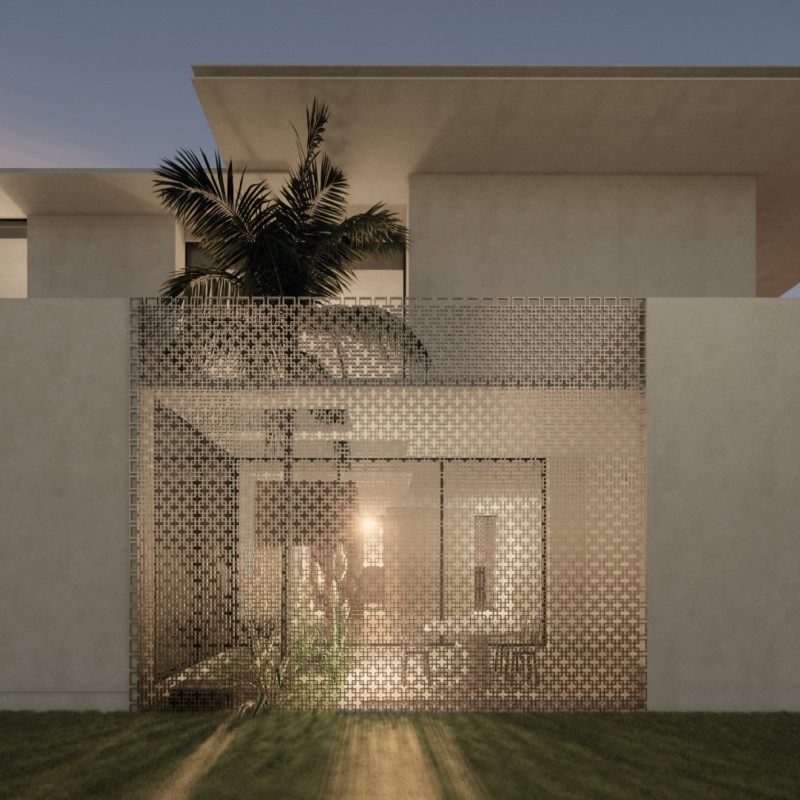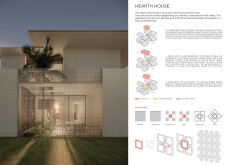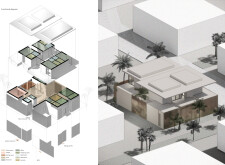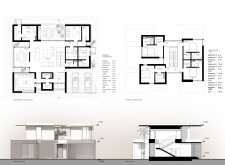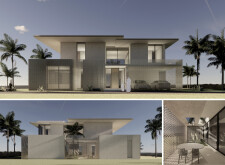5 key facts about this project
**Overview and Intent**
Hearth House is a residential project designed to accommodate the diverse and evolving needs of families in an urban environment. Situated within a conceptual cityscape, the design integrates modern aesthetics with functional adaptability, reflecting contemporary trends in family dynamics and sustainability. The premise centers on establishing a flexible living environment that responds to varying family compositions and lifestyles.
**Spatial Strategy and Functionality**
The layout revolves around a primary adaptable core that can support multiple functions. This central volume permits configuration changes based on the specific dynamics of the household, whether that involves communal living areas for larger families, work and play spaces for younger families, or spaces conducive to multi-generational living. Movable walls and multipurpose rooms enhance the flexibility of the interior, allowing for a fluid transition between private and shared spaces while promoting interaction among occupants. The design incorporates strategic window placements to facilitate natural light and cross ventilation, optimizing the overall functionality of the living environments.
**Material Selection and Environmental Considerations**
Hearth House employs a thoughtful selection of materials that align with both aesthetic and environmental goals. Its exterior showcases a perforated screen made from metal and concrete that offers privacy while ensuring adequate natural light and ventilation. The concrete core structure and smooth stucco walls reflect a modern architectural ethos favoring simplicity. Additionally, the design emphasizes sustainability through the use of local materials, the implementation of sliding panels to optimize airflow and space usage, and the incorporation of natural climate control mechanisms, thereby reducing energy consumption. The project also features lush landscaping, fostering a connection between indoor and outdoor environments to enhance occupant well-being.


